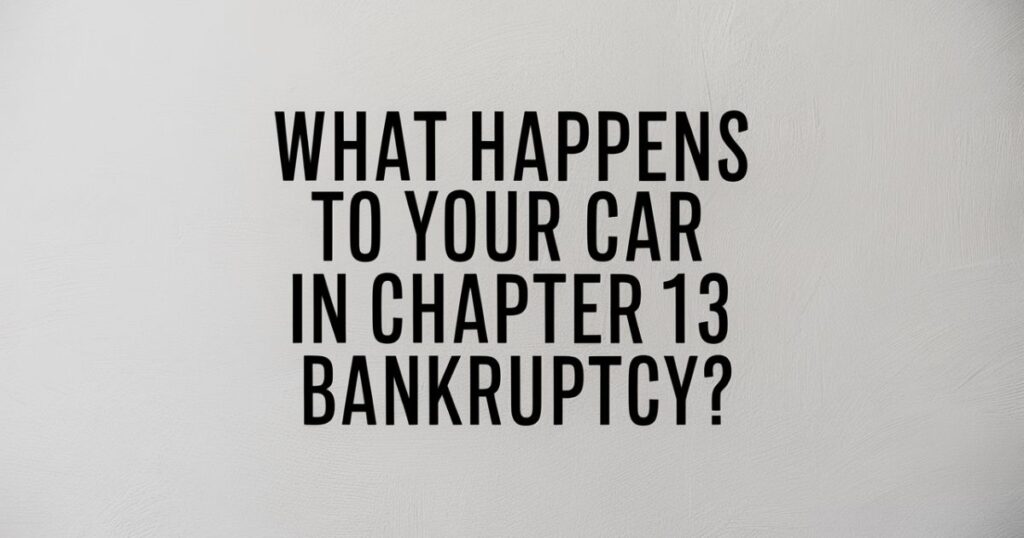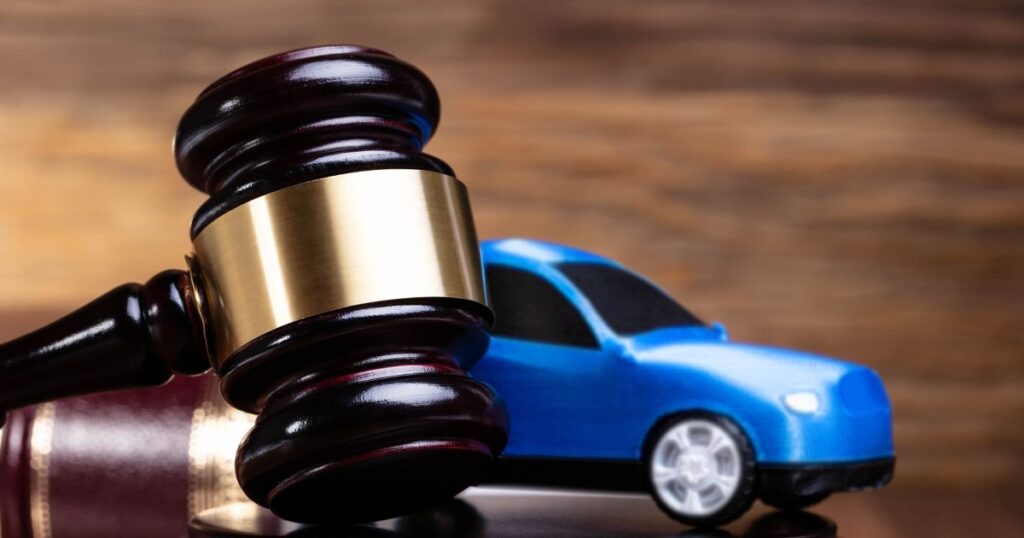When you file for bankruptcy, the fate of your car depends on several factors. The type of bankruptcy you file (Chapter 7 or Chapter 13), the value of your vehicle, and the amount of equity you have in it all play crucial roles in determining whether you can keep your car.
Bankruptcy is not the end of the road, but the start of a new journey towards financial stability.
Here’s a quick breakdown of possible outcomes:
- Keep the car: You may be able to retain your vehicle if you can continue making payments or if the car’s value is fully exempt.
- Surrender the car: You might choose to give up the vehicle to eliminate the debt.
- Redeem the car: In some cases, you can pay the car’s current value in a lump sum to keep it.
- Reaffirm the loan: You may agree to continue paying the loan under its original terms.
It’s important to note that each bankruptcy case is unique, and the outcome for your vehicle will depend on your specific financial situation, the laws in your state, and the decisions you make throughout the bankruptcy process.
Does Bankruptcy Clear Car Loans?
Bankruptcy can indeed clear car loans, but it’s not as straightforward as it may seem. Car loans are typically considered secured debts, meaning the vehicle itself serves as collateral for the loan. While bankruptcy can discharge your personal liability for the loan, it doesn’t automatically remove the lender’s right to repossess the car if payments aren’t made.
Key Points to Remember:
- Secured vs. Unsecured Debts
- Lender’s Rights Post-Bankruptcy
- Options for Handling Car Loans in Bankruptcy
Understanding the distinction between secured and unsecured debts is crucial. While unsecured debts like credit card balances are often discharged completely in bankruptcy, secured debts like car loans are treated differently. The personal obligation to pay may be eliminated, but the lien on the vehicle remains intact.
How to File for Bankruptcy and Keep Your Car in Chapters 7 and 13
Filing for bankruptcy while aiming to keep your car requires careful planning and understanding of the process. Let’s break down the steps for both Chapter 7 and Chapter 13 bankruptcies:
Chapter 7 Bankruptcy:
- Assess your car’s value and equity
- Determine if your car is exempt
- Consider reaffirmation or redemption
- File your bankruptcy petition
- Attend the 341 meeting of creditors
- Follow through with your chosen option for the car
In Chapter 7, also known as “liquidation bankruptcy,” the process moves quickly. You’ll need to act decisively to keep your car. If you’re current on payments and the car’s value is fully exempt, you may be able to keep it without much difficulty. However, if there’s non-exempt equity, you might need to explore options like redemption or reaffirmation.
Chapter 13 Bankruptcy:
- Evaluate your car loan and payment history
- Include the car loan in your repayment plan
- File your bankruptcy petition and proposed plan
- Attend the 341 meeting of creditors
- Continue making payments through your plan
Chapter 13, often called “reorganization bankruptcy,” offers more flexibility. You can include your car loan in your repayment plan, potentially with modified terms. This can be particularly beneficial if you’re behind on payments or if the car is worth less than what you owe.
“In bankruptcy, knowledge is power. Understanding your options can make all the difference in keeping your car and rebuilding your financial life.” – Financial Advisor Jane Doe
Can I Keep My Car If I File Chapter 7 Bankruptcy?

In Chapter 7 bankruptcy, keeping your car is possible, but it depends on several factors. Let’s delve deeper into the key elements that determine whether you can retain your vehicle.
The Chapter 7 Bankruptcy Trustee and Your Car
The bankruptcy trustee plays a crucial role in determining the fate of your car. They will:
- Assess the value of your vehicle
- Determine if there’s non-exempt equity
- Decide whether to sell the car for the benefit of creditors
If your car has significant non-exempt equity, the trustee may sell it to pay off creditors. However, if the car’s value is fully exempt or has minimal non-exempt equity, you’re more likely to keep it.
Your Car Lender and Your Car in Chapter 7
Your relationship with the car lender is critical. Consider these points:
- Current on payments: If you’re up-to-date, you may be able to continue payments and keep the car.
- Behind on payments: The lender may seek to repossess the vehicle unless you can catch up.
- Reaffirmation: You might agree to continue the loan under its original terms.
Other Ways to Keep a Car With a Loan in Chapter 7
- Redemption: Pay the fair market value of the car in a lump sum.
- Negotiate with the lender: Some lenders may agree to modified terms.
- Use exemptions: Protect your car’s equity through available bankruptcy exemptions.
It’s worth noting that redemption can be a powerful tool if your car is worth significantly less than what you owe. However, coming up with a lump sum payment can be challenging for many bankruptcy filers.
Read More:
Tax Write-Off For Vehicles Over 6,000 Lbs: Understanding Section 179 Deductions
What Happens to Your Car Loan When You File Chapter 7?
Filing Chapter 7 bankruptcy has immediate and long-term effects on your car loan. Let’s explore the key outcomes:
Your Car Loan Gets Discharged in Bankruptcy
When you file Chapter 7, your personal liability for the car loan is typically discharged. This means:
- You’re no longer legally obligated to repay the loan
- The debt won’t appear on your credit report as owed
- The lender can’t pursue you for any deficiency balance
This discharge can provide significant relief, especially if you owe more on the car than it’s worth. However, it’s crucial to understand that this doesn’t automatically mean you get to keep the car for free.
The Lien Against the Car Remains After Bankruptcy
While your personal liability is discharged, the lender’s lien on the vehicle survives bankruptcy. This means:
- The lender can still repossess the car if payments aren’t made
- You’ll need to address the lien to keep the car long-term
| Aspect | Discharged | Not Discharged |
| Personal Liability | ✓ | |
| Credit Report Debt | ✓ | |
| Lender’s Lien | ✓ |
Understanding this distinction is crucial. While you may no longer be personally liable for the debt, the lender’s right to the car as collateral remains intact. This is why many people choose to reaffirm their car loans or explore other options to keep their vehicles.
Returning the Vehicle in Bankruptcy to Get Out of a Car Loan
Sometimes, surrendering your vehicle in bankruptcy can be a strategic move. Here’s what you need to know:
- Clean slate: You can walk away from the loan without further obligation.
- No deficiency: The lender can’t pursue you for any remaining balance.
- Simplifies bankruptcy: It can make your case more straightforward.
Pros of Surrendering:
- Eliminates car payment
- Frees up budget for other expenses
- No risk of future repossession
Cons of Surrendering:
- Loss of transportation
- Potential difficulty obtaining a new car loan
- May complicate your daily life
Surrendering your vehicle can be particularly beneficial if you’re struggling with high car payments or if the vehicle requires expensive repairs. It allows you to start fresh without the burden of an unaffordable car loan.
How Chapter 13 Bankruptcy Can Help You Keep a Car
Chapter 13 bankruptcy offers unique advantages for car owners. Here’s how it can help:
- Loan restructuring: You may be able to lower your interest rate or extend the repayment term.
- Cramdown: If you’ve had the loan for over 910 days, you might reduce the principal to the car’s current value.
- Catch up on arrears: You can spread missed payments over your 3-5 year repayment plan.
“Chapter 13 bankruptcy can be a powerful tool for car owners, offering flexibility and the opportunity to retain your vehicle under more favorable terms.” – Bankruptcy Attorney John Smith
The ability to modify loan terms in Chapter 13 can be particularly beneficial if you’re underwater on your car loan or struggling with high interest rates. The cramdown provision, in particular, can provide significant relief by allowing you to pay only the current value of the car, rather than the full loan balance.
What happens to your car in Chapter 7 bankruptcy
In Chapter 7 bankruptcy, several scenarios can unfold regarding your car:
- Exemption covers full value: You keep the car without issues.
- Partial exemption: You may need to pay the non-exempt portion to keep the car.
- No exemption available: The trustee may sell the car unless you can arrange to buy it back.
Case Study: The Smith Family’s Chapter 7 Experience
The Smiths filed Chapter 7 with a car worth $15,000 and a $10,000 loan balance. Their state’s exemption covered $5,000 in car equity. They reaffirmed the loan and paid $500 to the trustee to cover the non-exempt equity, successfully keeping their car through bankruptcy.
This case study illustrates how a combination of exemptions and strategic decision-making can allow you to keep your car even in a Chapter 7 bankruptcy. It’s important to work closely with your attorney to understand your state’s exemptions and how they apply to your situation.
What happens to your car in Chapter 13 bankruptcy

Chapter 13 bankruptcy offers more flexibility for car owners:
- Continue regular payments: Often, you can maintain your current loan terms.
- Modify the loan: You may reduce interest rates or extend the repayment period.
- Cramdown: Potentially reduce the principal balance to the car’s current value.
In Chapter 13, you have the opportunity to include your car loan in your repayment plan. This can be particularly beneficial if you’re behind on payments or if your loan terms are unfavorable. The ability to modify the loan terms can make your car more affordable and increase your chances of successfully completing your bankruptcy plan.
What happens to your auto loan if you file for bankruptcy
The impact on your auto loan varies based on the type of bankruptcy and your choices:
- Chapter 7: Loan may be discharged, but lien remains.
- Chapter 13: Loan can be included in repayment plan, often with modified terms.
Key Considerations:
- Interest rates may change
- Repayment terms could be extended
- Lender’s willingness to work with you post-bankruptcy
It’s important to communicate with your lender throughout the bankruptcy process. Some lenders may be willing to work with you to modify your loan terms, especially if it means they’ll continue receiving payments rather than having to repossess and resell the vehicle.
How to protect your car in bankruptcy
To maximize your chances of keeping your car through bankruptcy, consider these strategies:
- Accurately value your vehicle
- Understand available exemptions
- Stay current on payments if possible
- Consider reaffirmation or redemption in Chapter 7
- Explore loan modification in Chapter 13
Being proactive and strategic can significantly increase your chances of keeping your car. Work closely with your bankruptcy attorney to explore all available options and choose the best path for your specific situation.
Reaffirming your auto loan
Reaffirmation involves agreeing to continue your car loan under its original terms. Consider these factors:
Pros:
- Keep your car
- Opportunity to rebuild credit
Cons:
- Continued liability for the debt
- Risk of deficiency if you default later
Reaffirmation can be a good option if you’re current on your payments and the car is essential for your daily life. However, it’s important to carefully consider whether you can afford the payments long-term, as reaffirmation means you’ll remain liable for the debt even after bankruptcy.
Bankruptcy exemptions
Exemptions play a crucial role in protecting your assets, including your car. Here’s what you need to know:
- Federal vs. State exemptions: Some states allow you to choose between federal and state exemptions.
- Wildcard exemptions: These can be applied to any asset, including your car.
- Stacking exemptions: Combining multiple exemptions to protect more of your car’s value.
Understanding and maximizing your available exemptions can be the key to keeping your car in bankruptcy. Some states offer generous motor vehicle exemptions, while others may require you to use a combination of exemptions to fully protect your vehicle’s value.
Also Read More:
Understanding Car Parts And Their Functions
Frequently Ask Questions
Can I keep my car if I file Chapter 7 in Texas?
Yes, in Texas, you can keep your car when filing Chapter 7 if its equity is within the state’s exemption limit.
Can I keep my car if I file Chapter 7 in Florida?
Yes, in Florida, you can keep your car when filing Chapter 7 if you can exempt its full value or continue paying the loan.
Is a car loan debt?
Yes, a car loan is considered a type of secured debt since it’s tied to the vehicle.
Is a car loan fixed?
Yes, car loans typically have fixed interest rates and monthly payments over the loan term.
Do loans count as debt?
Yes, loans are considered debt because they represent borrowed money that must be repaid.
The Bottom Line
Filing bankruptcy on a car loan and keeping the car is often possible, but it requires careful planning and understanding of the process. Whether you choose Chapter 7 or Chapter 13, there are strategies available to help you retain your vehicle while addressing your overall financial situation. Remember, each bankruptcy case is unique, and consulting with a qualified bankruptcy attorney can provide personalized guidance for your specific circumstances.
By thoroughly exploring your options and understanding the implications of each choice, you can navigate the bankruptcy process while maximizing your chances of keeping your car. This can provide the transportation security you need as you work towards rebuilding your financial life post-bankruptcy.







